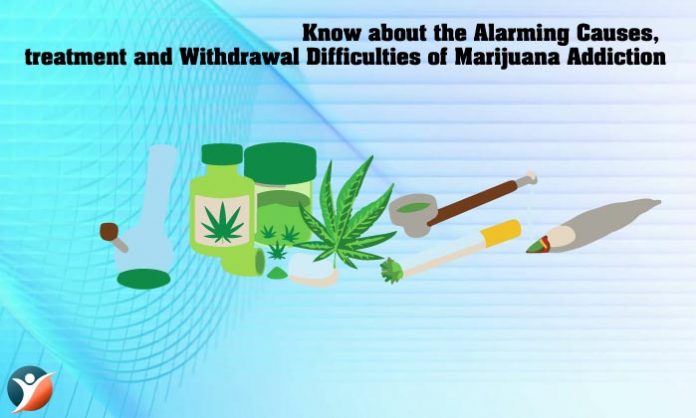
What is marijuana abuse and addiction?
As per the National Institute on Drug Abuse (NIDA), the most commonly used illicit drug in the US is marijuana. It is usually smoked as a cigarette or in a pipe, or eaten. The compound that is responsible for mind altering properties of marijuana is tetrahydrocannabinol (THC).
When marijuana is introduced in your body, THC gets into the bloodstream and reaches the brain. Then, it targets the cannabinoid receptors present mostly in that part of the brain which is responsible for coordination, memory, thinking and sensory perception.
Medical marijuana is sometimes prescribed by doctors to treat certain health conditions. Unsupervised and uncontrolled use of marijuana with high frequency can lead to marijuana addiction. Abusing marijuana for recreation can have serious repercussions on the health of the person.
As per the National Institute on Drug Abuse [1], nearly 30% of the people who use marijuana develop some kind of marijuana use disorder. Scientists added that those people who started using marijuana before the age of 18 years are said to be 4 to 6 times more likely to develop marijuana disorder than adults. Estimations show that in the US, there are 4 million people who meet all the criteria of marijuana disorder, out of which 138,000 voluntarily have sought treatment.
Reports suggest that marijuana use disorder can turn into addiction when it starts interfering with the daily activities of the person. One of the most glaring signs of addiction is development of tolerance. Being said that, marijuana can be used in the form of medical marijuana for helping people and children with chemotherapy induced nausea and seizures. Legalizing marijuana use will help in decreasing the illegal use of the drug. However, there are studies that indicate that marijuana should not be used for treating morning sickness and heart disease. Also, there are studies that indicate that marijuana use in children and adults below the age of 25 years can impair brain function in them.
Another problem with marijuana abuse is its potency. As per the data obtained from the National Institute on Drug Abuse, the average THC content in confiscated marijuana in 1990 was less than4% which has increased to 12 % in today’s times.
These conflict of opinions among the scientists have led to classification of marijuana in schedule I drug [2] by the Drug Enforcement Administration (DEA), which implies that the drug in question has “no currently accepted medical use and a high potential for abuse.”
Table of Contents
- Who becomes addicted?
- a. Genes
- b. Unhealthy Social and Family Life
- c. Mental Illness
- The drug of choice
- Building up a tolerance
- Dependence and withdrawal
- The cycle of addiction
- Treatment for Marijuana Addiction
- Final Words
Who becomes addicted?
People should understand that marijuana use is not going to go away. As per a 2013 study, [3] nearly 6,600 people in the United States start using marijuana every day! This number might have become higher now as marijuana use has been legalized in some states in the form of medical marijuana. What is more alarming is that the use of this illicit drug is rising at a higher rate among seniors.
Considering all these factors in mind, the question that bugs us is who gets addicted to marijuana and how does this addiction develop.
A. Genes
For developing any addiction, you can blame your genes. Studies have been done on identical twins who were raised in different families. It was found that if one of the twins slipped into the pit of addiction, the other was at a much higher risk of following his footsteps.
B. Unhealthy Social and Family Life
The risks of developing addiction can be avoided by having close family ties. When addiction is looked at in a more holistic way, it can be seen that addiction develops when people are unable to temper their behaviors in negative environments. People who are responsible, have a healthy social and family life are very less prone to develop addictions, howsoever high might be their risks.
Those people who do not have the support of their families or are unable to open up to them because of their emotional problems tend to seek their refuge in marijuana. They are at a much higher risk of developing addictions.
C. Mental Illness
Another factor that is thought to play an important role in leading to marijuana addiction is mental illness, which is known to have environmental as well as genetic causes. Some of the mental illnesses that can lead to marijuana addiction are as follows:
- Depression
- Anxiety
- Post-traumatic stress disorder (PTSD)
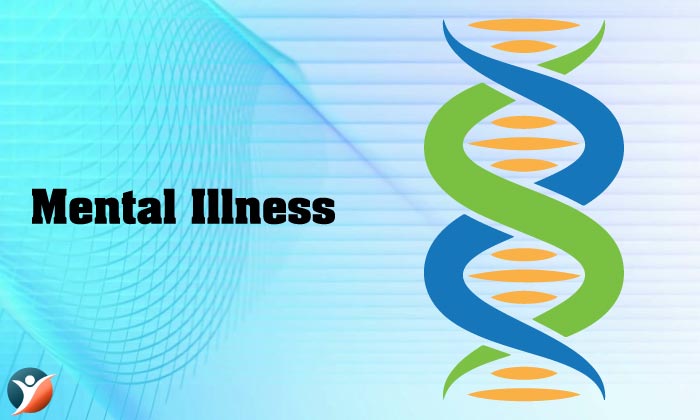
The drug of choice
Marijuana has become the drug of choice for abuse because it gives the famous ‘high’ to the person who uses it. Marijuana relaxes them, makes colors seem brighter and gives them an overall feeling of calm and serenity. It helps in relieving pain as well. Its effect is known to last for 3 hours. One of the greatest thongs that work in favor of marijuana is that it produces much less side effects as compared to other illicit drugs. People who develop marijuana addiction often move on to other forms of addictions as well. It is easier to control the withdrawal symptoms of marijuana addiction.
Building up a tolerance
When a person uses marijuana for long periods of time, his body develops tolerance for the substance and as a result he requires more dose to feel the same high. After entering into the brain, psychoactive drugs tend to override the brain’s natural process and boost a specific function of it. In order to protect itself, the brain develops resistance to the substance in question and the person does not feel the same effect in the earlier dose. What starts as merely smoking a marijuana cigarette then progresses to consumption of whole marijuana leaves for enhanced effects. Dependence on marijuana happens when users build up a tolerance for the substance and need more and more of it to experience the same effect.
A study [4] discovered that people who used marijuana had fewer cannabinoid receptors in their brain for endogenous cannabinoids. These receptors are used by these endogenous products for carrying out various functions in the brain. THC is also known to affect the reward center of the brain and stimulates the release of pleasure hormone, dopamine. With time, marijuana addicts have start responding less to dopamine neurotransmitter. This leads to the body to feel anxious, irritation, depression and aggression. IT is not that the brain cells start releasing lesser amounts of dopamine. Rather, the brain cells do not know what to do with all the extra dopamine as the signal from the neurotransmitter is not being heard or transmitted down the line. This makes a person more vulnerable to marijuana abuse.
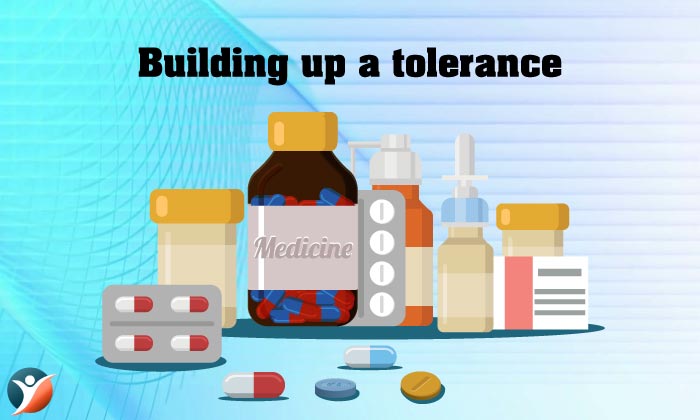
Dependence and withdrawal
Once tolerance sets in, it brings dependence along with it. If a drug is being used by someone for a long period of time, it will make his brain accustomed to it. Then the brain tries to return to the normal baseline and in order to do so, it tries to compensate the difference. It lowers the function that the drug increases, such as, mood or increases the function that the drug decreased like heart rate. Therefore, when the drug is no longer in the system, the person feels that his heart is racing and the mood is low. When these negative symptoms start to show up upon unavailability of drug in the body, the person is said to be addicted.
However, quitting marijuana does not produce very strong withdrawal symptoms like those seen while quitting cocaine or heroin, except in heavy and frequent users.
Some of the withdrawal symptoms observed while quitting marijuana are as follows:
- Restlessness
- Feeling anxious or worried
- Irritability leading to sudden outbursts of anger
- Feeling tired during the day
- Feeling depressed
- Lack of appetite and weight loss
- Having trouble sleeping, with nightmares and vivid dreams
Following are the main physical cannabis withdrawal symptoms:
- Headaches
- Digestion problems, cramps and nausea
- Sweating
- Fever or chills
- Shakiness
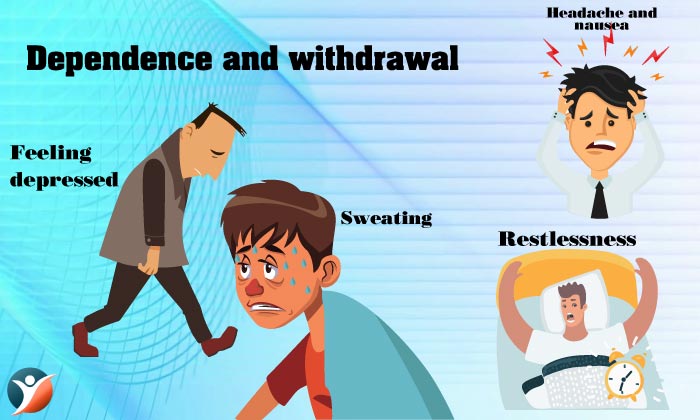
The cycle of addiction
Unlike other drugs of abuse, marijuana abuse takes time to set in. A marijuana user might not even realize that he has become addicted to it unless that point of time gets crossed. Other reasons that people do not realize they are addicted to marijuana is the fact that they try to rationalize their continued use of marijuana despite the adverse effects. Therefore, they get stuck in the vicious cycle of addiction, without even realizing.
Gradually, getting high becomes the sole reason for survival. It becomes more important than doing favorite hobbies or spending time with friends and family. Major negative consequences too cannot stop the person from using marijuana. An addicted person is unable to make rational decisions because the brain cannot function properly.
Treatment for Marijuana Addiction
The signs and symptoms of marijuana abuse are similar to those observed with other substances of abuse, although the clinical outcomes are less severe in nature. As per the available studies, effectively treating the mental health illness with behavioral therapy and medicines can help a person to quit marijuana use as well. This is especially true for people who have chronic mental illness and are frequent users of the illicit drug. Following are some of the behavioral treatments that have shown promise:
- Cognitive-behavioral therapy: It is a form of psychotherapy in which people are taught strategies to identify and correct certain behavior patterns that aids in self-control, stops use of drug and addresses a wide variety of other problems that occur along with it.
- Contingency management: It is a therapeutic management approach that is based on frequently monitoring the targeted behavior of the addict and removing all the positive rewards when the code of behavior is breached.
- Motivational enhancement therapy: This is a systematic form of intervention which is designed to show rapid and internally motivated change in the person. The therapy does not try to cure the person, but rather mobilizes his own internal resources for getting engaged in the treatment to change his life.
At present, the US FDA has not given approval to any of the medicines that can be used for the treatment of marijuana use disorder. Some of the drugs that have shown some promise in this area include zolpidem and gabapentin. Research is going on in this field,
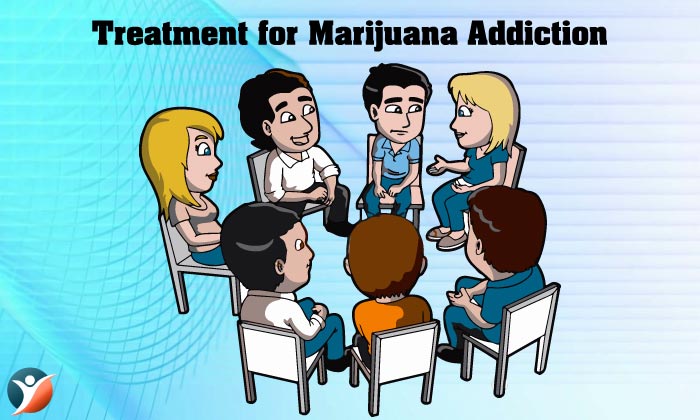
Final Words
Marijuana addiction can take years to develop but it is recommended that the friends and family of the addict take substantial steps to help him and take him out of this vicious cycle so that he can enjoy his life yet again.




